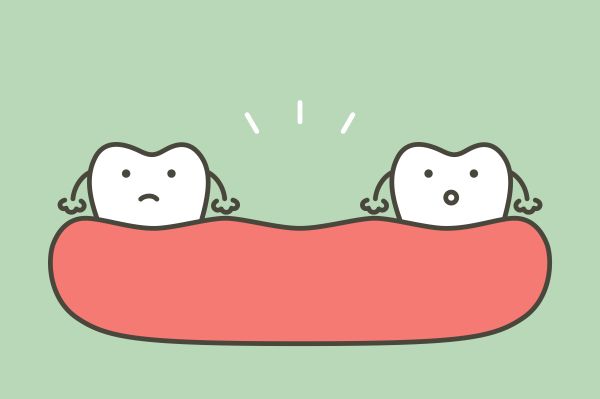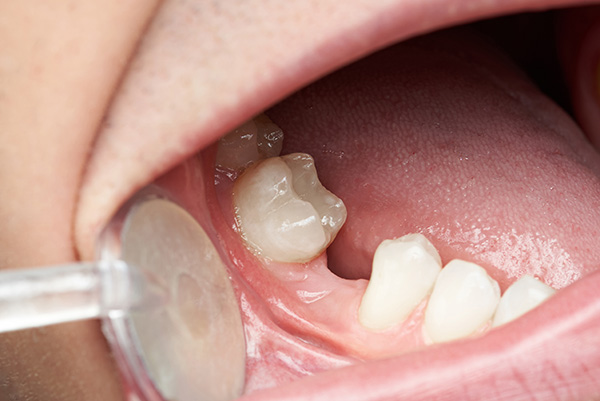When is a Dental Bridge Recommended to Replace a Missing Tooth?

A dental bridge is one of the tooth replacement options a dentist might recommend to restore missing teeth and a patient’s smile. Regardless of the cause of tooth loss—injury, tooth decay or an oral health condition—tooth loss can make eating inconvenient and might even affect a patient's confidence. Once in place, a dental bridge will improve the appearance of teeth and ensure full dental functions for many years.
Overview of dental bridges
A dental bridge is a tooth replacement option to consider when one or more teeth are missing. As the name implies, a dental bridge connect the gap left by missing teeth. Different types of dental bridges are available, but the most common ones are traditional bridges and implant-supported bridges.
Traditional bridges and implant-supported bridges are somewhat alike – both have two crowns and one or more prosthetic teeth (pontic). The difference is that a traditional bridge holds the pontic in place with nearby dental crowns, and an implant-supported bridge is connected to dental implants.
When is a dental bridge recommended?
Fitting a traditional dental bridge is a non-surgical procedure, which makes this tooth prosthetic suitable for most people who have lost one or more teeth. A dentist will recommend a dental bridge after consulting with the patient. Some of the conditions for determining eligibility include:
Loss of one or more teeth: anyone who has lost one or two teeth but still has healthy teeth present next to the gap can get a dental bridge. When more than three teeth are missing, the patient will need a more stable solution, like an implant-supported bridge or dentures. If more than one tooth is missing, but not enough to require a full set of dentures, the patient will be better off with a conventional dental bridge.
When surgery is not an option: if a patient is not healthy enough to undergo surgery or simply does not like surgical procedures, a dentist will recommend a dental bridge to restore dental function and appearance.
When a quick tooth replacement is necessary: installing a traditional dental bridge requires only two dental appointments, which makes it a quick alternative for restoring dental function.
Usually, anyone looking to replace a lost tooth with a dental bridge should not have gum disease. Likewise, any adjacent teeth that will be used to support the bridge should be checked for decay and other problems before placing the bridge. Even though oral health conditions will not disqualify a patient, they should be addressed first to reduce the risk of complications after placing the bridge.
The advantages of choosing a dental bridge
The dental bridge procedure has its benefits. Going to the dentist to replace lost teeth with dental bridges is a quick way to restore oral function and help patients feel more confident by gicing them a complete smile. Since the process is noninvasive, recovery requires minimal downtime, and patients can start using the dental bridge as soon as the process is complete.
Final note
Tooth loss should not stop you from living normally and enjoying life. To know if you are eligible for a dental bridge, book a consultation appointment with the general dentist.
Request an appointment here: https://www.ohiocosmeticdentists.com or call Ohio Cosmetic Dentists at (614) 503-5240 for an appointment in our Columbus office.
Check out what others are saying about our services on Yelp: Read our Yelp reviews.
Recent Posts
If you are missing several teeth or all of your upper or lower teeth or even all the teeth in your mouth, you may be wondering, “What are my options for replacing missing teeth?” Full or partial dentures may be a good option for you. In this article, we’ll discuss what makes a good candidate…
Missing teeth can result from many different things; regardless of how you lost your teeth, there are options for replacing missing teeth. There may be a stigma around dental care breaking the bank, but these options all have their pros and cons, which you should take into consideration.One option many consider is doing nothing. While…
There are several dental implant options for replacing missing teeth. A dental implant permanently replaces a missing tooth, saving smiles and helping people eat their favorite foods for years to come. Unlike other options for replacing missing teeth, dental implants do not require regular check-ups from a dentist.The three most common types of dental implants…
Within the past few decades, advances in dentistry have resulted in many options for replacing missing teeth. While all of these options help restore functionality and appearance to a person’s mouth, they also differ in several ways. Depending on a patient’s dental history and lifestyle, one replacement option may be better suited for them than…


